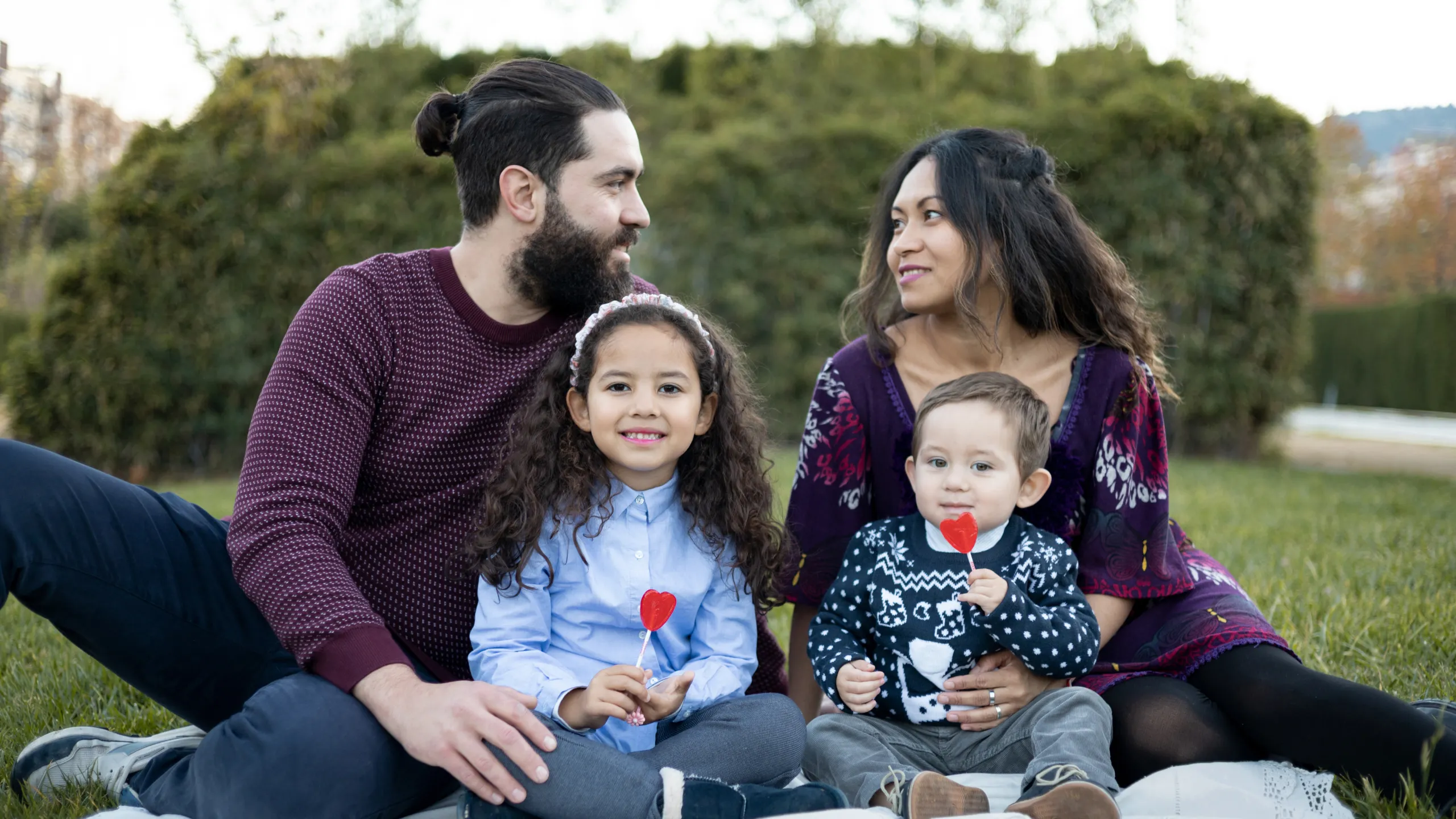Ecuadorian Family Reunification Parole
Authored by Wendy R. Barlow

USCIS is well aware of the backlog they’re experiencing, and they’re currently searching for ways to streamline immigration processes and reduce wait times. Family reunification has been a major concern in immigration, and the situation has only become more significant over the past decade.
Programs like the Ecuadorian Family Reunification Parole Program are intended to bring families back together despite the significant wait times and hefty backlog of cases. If you’re an Ecuadorian-born person currently residing in the United States, here’s how the program can help you reunite your family by bypassing a lengthy wait.
What Does Parole Mean in Immigration?
The word “parole” can be confusing. The term is most often associated with someone who has been convicted of a crime being released early from prison for good behavior. In immigration, the word “parole” doesn’t mean that anyone is in trouble.
Immigration parole means that an eligible person is able to enter the United States even though they do not have a visa or other immigration status that would allow entry. In short, family reunification parole means you’re allowed to come to the United States earlier than your expected wait time in order to reunite with your family.
There are many reasons why the Department of Homeland Security may decide to grant parole. Parole is most commonly used in situations where a lengthy waiting period may be dangerous, like when someone needs to come to the United States for a lifesaving medical procedure or treatment.
USCIS is currently exploring new ways to use the parole process to simplify common issues within the current immigration system. One of these methods is family reunification parole, which is designed to bring families back together after long periods of separation.
What Is Family Reunification Parole?
Family members of green card holders or United States citizens are eligible for immigrant visas in the United States, but only a specific number of immigrant visas can be issued each year for each category. The number of requests for these immigrant visas has consistently been higher than the number of immigrant visas available per category per year, creating backlogs that sometimes span as long as 25 years.
This backlog is due to the limited number of immigrant visas available each year. The U.S. Government has been looking into ways to make parole benefits accessible to eligible families who have been separated for long periods of time as a result of that backlog. Families who have been waiting for years to reunite may be able to utilize parole to finally end the lengthy waiting process.
How Does the Ecuadorian Family Reunification Parole Program Work?
Eligible beneficiaries of approved alien relative petitions can receive an travel document that will allow them to travel to the United States for a period of up to three years while they’re waiting for an alien relative green card to become available. They may be able to extend their parole beyond three years.
The program is designed to reduce the probability of people from Ecuador crossing the border without documentation due to long visa wait times. The U.S. Government hopes that family reunification parole program will encourage safe and documented immigration by providing an alternative path to waiting out a significant backlog.
Unmarried children and spouses of Ecuadorian people who have become permanent residents may be able to come to the United States as part of the parole program. Children (including married adult children) and siblings of Ecuadorian-born people who have become United States citizens are also eligible for parole.
The parole program requires that the permanent resident or citizen family member of an Ecuadorian national become a financial supporter of the family member they’ve petitioned for. If everyone involved meets the requirements, beneficiaries of approved immigration visa petitions will be issued a special travel document that will allow them to enter the United States with proper documentation.
Who Is Eligible for the Ecuadorian Family Reunification Parole Program?
The Ecuadorian Family Reunification Parole Program is extended to eligible family members who are the beneficiaries of approved immigrant visa petitions. To be eligible, you must be outside the United States, must meet all requirements, including screening and vetting and medical requirements, and must not have already received an immigrant visa.
How Do You Apply for the Ecuadorian Family Reunification Parole Program?
The Ecuadorian family reunification parole program is currently invitation-only. There is no way to file a form or request to be considered for the program. The U.S. Department of State is reviewing people with approved immigrant visa petitions who have not yet been approved for an immigrant visa and deciding who to invite on a case-by-case basis.
Unfortunately, there’s nothing that people with outstanding alien relative petitions can do to increase their chances of receiving an invitation.
If you’re found to have violated the law, acted in a way that disrupted your eligibility, or you’ve entered the United States without proper authorization, you will eliminate your chances of becoming selected. It’s important to wait patiently and follow the rules.
How Do You Know If You’ve Been Selected To Be a Part of the Program?
The Department of State’s National Visa Center will contact you or the family member who filed the petition on your behalf to inform you that you’ve been selected to participate in the family reunification parole program. They will provide you with further instructions regarding the next steps you need to take to participate. You still cannot enter the United States until they’ve given you your travel document. The process may take several weeks or months.
If you’re concerned that you may have missed your invitation, USCIS has a search tool that will allow you to find and confirm your invitation. Your invitation may be displayed online before you receive direct contact from USCIS, so it may be a good idea to check every few days to see if your invitation has been posted. All you need to do is enter the receipt number from your Form I-130 submission and click the search button.
In the meantime, recipients waiting to be invited must obtain a passport or renew their passport if it’s set to expire soon. Only people with valid passports (or another acceptable alternative travel document) will be able to participate in the program. Organizing your documents ahead of time can make it easier to move forward with the process in the event that you’re selected.
What Happens If You’re Invited to Join the Ecuadorian Family Reunification Parole Program?
Eligible family members who are invited to join the Ecuadorian Family Reunification Parole Program will need the immigrant visa petitioner to file a request to be a supporter of the beneficiary and eligible family members. The petitioner will need to complete a
Form I-134A, Online Request to be a Supporter and Declaration of Financial Support and provide required supporting documentation.
The vetting process includes inspection at a U.S. port of entry when you arrive with your travel document. You’ll be required to submit biometrics, which can be used to verify your identity and, in some cases, your criminal history.
You must pass a biometrics check, medical background check, and criminal background check in order to be able to enter the United States under the parole program. If you’re admitted into the United States, you’ll be able to enjoy some of the rights and privileges that lawful permanent residents are able to utilize. The rest of your rights and privileges will be granted when a green card is made available to you.
Recipients are allowed to apply for an Employment Authorization Document (EAD), also known as a work permit, while they’re waiting for their green card to become available. As long as recipients keep their work documents current and renew them when necessary, they’re allowed to work in the United States. Beneficiaries will no longer need a work permit when they receive their lawful permanent resident card.
Are There Family Reunification Parole Programs for Families From Other Countries?
The Ecuadorian Family Reunification Parole program is the most recently announced parole program, but several others exist. USCIS has been offering family reunification parole programs since 2007, starting with Cuba. Since the first family reunification parole program, USCIS has expanded the scope of the program and modernized the process for admitting eligible family members.
USCIS offers a family reunification parole program to lawful permanent residents or U.S. citizens with immediate family members who are nationals of the following countries:
- Colombia.
- Cuba.
- El Salvador.
- Guatemala.
- Haiti.
- Honduras.
Some of these programs, like the Cuban and Haitian reunification programs, have existed for over a decade. USCIS has expanded to include Colombia, El Salvador, Guatemala, and Honduras and modernized the processes for Cuba and Haiti to make them more efficient. At the moment, USCIS has not announced any definitive plans to add more countries to the reunification parole program roster.
The program works similarly for each country, and USCIS has separate guidance pages for each country’s family parole process. You can refer to the separate country pages for more details and in-depth information about how reunification parole works.
Do You Need Assistance with a Family-Related Green Card Case?
Family reunification parole isn’t available to nationals of every country. If you’re seeking a green card for a family member who lives in a country that isn’t part of the program, Cohen, Tucker + Ades may be able to help.
Our experienced immigration attorneys can help you navigate family visa and green card solutions, including petitioning for an alien relative. Contact us for a consultation on your case. After reviewing the details, we’ll be able to discuss the immigration options that may be available to your family.
Sources:
Confirm Your Invitation for the Family Reunification Parole Processes | USCIS
Not sure which option is right for you? Request a confidential consultation today.

